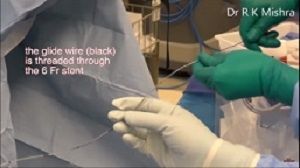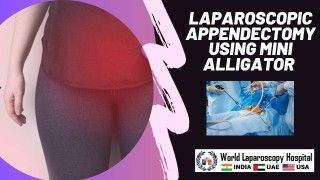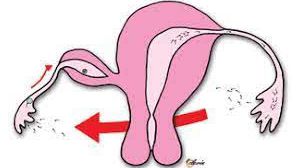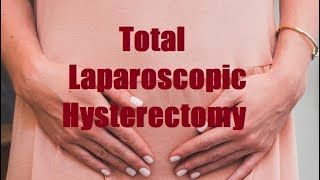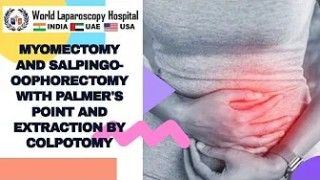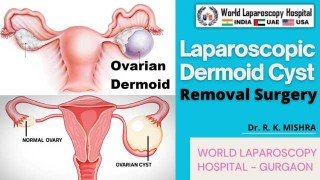Enhancing Treatment : Laparoscopic Myomectomy for Large Submucous Fibroids Unveils New Possibilities
Add to
Share
1,757 views
Report
2 years ago
Description
Introduction: Welcome to today's informative discourse on the topic of "Enhancing Treatment Options: Laparoscopic Myomectomy for Large Submucous Fibroids Unveils New Possibilities." In this discussion, we will explore the benefits and advancements associated with laparoscopic myomectomy as an alternative to hysteroscopic myomectomy for the management of large submucous fibroids. This innovative approach presents a range of advantages and opens up new horizons in the realm of fibroid treatment. Join us as we delve into the details of this procedure and its potential to transform the lives of individuals affected by large submucous fibroids. Understanding the Challenge: Large submucous fibroids, characterized by their significant size and location within the uterine cavity, can cause a multitude of distressing symptoms such as heavy menstrual bleeding, pelvic pain, and reproductive issues. Traditionally, hysteroscopic myomectomy has been the primary treatment option for these fibroids due to its minimally invasive nature. However, its efficacy may be limited in cases where fibroids are too large or deeply embedded within the uterine wall. In such scenarios, an alternative approach is necessary to achieve optimal outcomes. The Advancements of Laparoscopic Myomectomy: Laparoscopic myomectomy has emerged as an exciting and effective alternative for the management of large submucous fibroids. This surgical technique involves the use of small incisions in the abdomen to access and remove fibroids from the uterine wall. It allows surgeons to navigate complex fibroid locations and address larger fibroids that may be inaccessible via hysteroscopy. Through the use of specialized instruments and advanced visualization technology, laparoscopic myomectomy enables precise and thorough removal of fibroids while minimizing trauma to surrounding tissues. Benefits and Possibilities: The utilization of laparoscopic myomectomy in the treatment of large submucous fibroids offers several notable benefits and unveils new possibilities: Enhanced Fibroid Removal: Laparoscopic myomectomy provides surgeons with improved access to large submucous fibroids, allowing for more thorough removal and reducing the likelihood of leaving behind residual fibroid tissue. This comprehensive approach enhances the effectiveness of the procedure, relieving symptoms and improving overall quality of life for patients. Preservation of Uterine Function: Unlike other treatment options such as hysterectomy, laparoscopic myomectomy preserves the uterus, making it a desirable choice for women who wish to retain their fertility or maintain hormonal balance. This option opens up new possibilities for women who aspire to conceive or continue their reproductive journey after fibroid treatment. Minimally Invasive Approach: Laparoscopic myomectomy is a minimally invasive procedure compared to open surgery, resulting in smaller incisions, reduced scarring, and faster recovery times. Patients typically experience less pain and have shorter hospital stays, enabling them to return to their daily activities more quickly. Improved Cosmetic Outcomes: The smaller incisions used in laparoscopic myomectomy offer improved cosmetic results compared to traditional open surgery. This aspect can positively impact a patient's body image and psychological well-being. Reduced Complications: Laparoscopic myomectomy has shown a lower risk of complications such as infection, blood loss, and postoperative adhesions compared to open surgery. The precision and advanced techniques employed during laparoscopic procedures contribute to a safer surgical experience for patients. Conclusion: In conclusion, the advent of laparoscopic myomectomy has revolutionized the treatment options available for managing large submucous fibroids. By offering enhanced fibroid removal, preservation of uterine function, a minimally invasive approach, improved cosmetic outcomes, and reduced complications, laparoscopic myomectomy paves the way for new possibilities in the field of fibroid treatment. This procedure provides renewed hope for individuals grappling with the challenges posed by large submucous fibroids, offering improved symptom relief, preservation of fertility, and a faster recovery process. As we continue to witness advancements in surgical techniques and technology, laparoscopic myomectomy stands as a testament to the progress made in gynecological care. Its ability to address complex fibroid cases that were once deemed difficult to treat with hysteroscopy highlights the importance of personalized and comprehensive approaches to patient care. It is crucial to note that the decision to undergo laparoscopic myomectomy for large submucous fibroids should be made in consultation with a skilled gynecologist who can evaluate the individual's specific condition and recommend the most suitable treatment option. While laparoscopic myomectomy offers numerous advantages, it may not be appropriate for every patient, and alternative approaches may be necessary. In conclusion, laparoscopic myomectomy for large submucous fibroids presents a promising shift in the landscape of fibroid treatment. This procedure offers a range of benefits, including enhanced fibroid removal, preservation of uterine function, minimally invasive approach, improved cosmetic outcomes, and reduced complications. As medical science continues to evolve, laparoscopic myomectomy unveils new possibilities and brings renewed hope to individuals seeking effective and transformative solutions for their fibroid-related challenges.
Similar Videos

